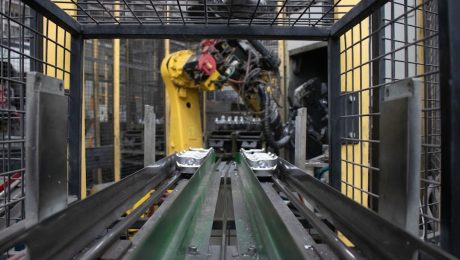Navigating the complex world of European manufacturing standards, particularly those under the EN (European Norm) umbrella, can feel like traversing a labyrinth. This guide provides a clear path, breaking down the key aspects of manufacturing to meet EN standards, ensuring your products are safe, reliable, and legally compliant within the European market.
1. Identifying Relevant EN Standards for Your Product
The first, and arguably most crucial, step is identifying which EN standards apply to your specific product. EN standards cover a vast range of products and processes, from electrical safety (EN 60335) to machinery safety (EN ISO 13849) and environmental protection (EN ISO 14001). A thorough investigation is essential. This often involves consulting the official websites of standardization bodies like CEN (European Committee for Standardization) and national standardization organizations. You’ll need to consider factors such as:
- Product Type: What is the intended use of your product? This will heavily influence the relevant standards.
- Materials Used: The materials used in manufacturing can determine compliance requirements.
- Manufacturing Processes: Certain manufacturing processes might necessitate specific safety and quality standards.
- Target Market: Understanding the specific regulations in your target European markets is vital.
Failing to correctly identify the relevant standards can lead to costly rework, product recalls, and legal repercussions. Seeking expert advice from a standards compliance consultant can be invaluable in this stage.
2. Implementing EN Standards Throughout Your Manufacturing Process
Once the relevant EN standards are identified, their implementation throughout your manufacturing process is paramount. This requires a systematic approach, integrating the standards into every stage, from design and procurement to production and quality control. Key aspects include:
- Design for Compliance: Incorporating EN standards into the product design phase ensures compliance from the outset. This avoids costly modifications later in the process.
- Material Selection: Choosing materials that meet the specified requirements of the relevant EN standards is crucial for both safety and performance.
- Process Control: Implementing robust quality control procedures throughout the manufacturing process ensures consistent adherence to the standards.
- Documentation: Maintaining meticulous documentation of every stage, including material certifications, test results, and process parameters, is essential for demonstrating compliance.
This requires a well-defined quality management system (QMS), often based on ISO 9001, which provides a framework for consistent and efficient implementation of EN standards.
3. Rigorous Testing and Verification Procedures
Thorough testing is crucial for demonstrating compliance with EN standards. This involves a series of tests designed to verify that the product meets the specified requirements. The nature and extent of testing will vary depending on the relevant standards. This might include:
- Safety Testing: Evaluating the product’s safety features to ensure they meet the required levels of protection.
- Performance Testing: Assessing the product’s functionality and performance characteristics to ensure it meets the specified parameters.
- Environmental Testing: Testing the product’s resilience to various environmental conditions such as temperature, humidity, and vibration.
- EMC Testing (Electromagnetic Compatibility): Verifying that the product does not interfere with other electronic devices and is not susceptible to electromagnetic interference.
These tests should be conducted by accredited testing laboratories to ensure impartiality and credibility. The test results form a critical part of the compliance documentation.
4. Securing EN Certification: A Mark of Quality and Compliance
While not always mandatory, obtaining EN certification from a notified body significantly enhances market credibility and demonstrates a commitment to compliance. A notified body is an independent organization designated by a national authority to assess conformity with EN standards. The certification process typically involves:
- Factory Inspection: A thorough inspection of the manufacturing facilities to verify the implemented quality management system and manufacturing processes.
- Product Testing: Independent testing of the product by the notified body to confirm compliance with the relevant EN standards.
- Documentation Review: A comprehensive review of all relevant documentation to ensure completeness and accuracy.
Securing EN certification provides a competitive edge, opens doors to new markets, and reassures customers of the product’s quality and safety.
5. Continuous Improvement and Staying Ahead of the Curve
Meeting EN standards is not a one-time event; it requires a commitment to continuous improvement. Regularly reviewing and updating your processes, staying informed about changes to standards, and proactively addressing any identified non-conformances are crucial for maintaining compliance. This involves:
- Regular Audits: Conducting internal audits to identify areas for improvement in your QMS and manufacturing processes.
- Monitoring Standards Updates: Staying informed about changes and updates to relevant EN standards to ensure ongoing compliance.
- Corrective and Preventive Actions (CAPA): Implementing a robust CAPA system to address any identified non-conformances and prevent recurrence.
- Employee Training: Ensuring that all employees involved in the manufacturing process are adequately trained on the relevant EN standards and procedures.
By embracing continuous improvement, manufacturers can not only ensure ongoing compliance but also enhance product quality, efficiency, and competitiveness.
Meeting EN standards requires dedication, thoroughness, and a commitment to quality. By following these steps, manufacturers can navigate the complexities of EN standards and confidently bring safe, reliable, and legally compliant products to the European market.
SEO Tags:
EN Standards, European Norms, Manufacturing Compliance, Quality Management System, Product Certification
Wind turbines, the silent giants of renewable energy, rely on complex and robust support systems to harness the power of the wind. These systems are crucial for the efficient and safe operation of the turbine, ensuring optimal energy generation and a long lifespan. This comprehensive guide delves into the intricacies of wind turbine blade support systems, exploring their design, functionality, and maintenance.
1. The Nacelle: The Heart of the Support System
The nacelle, a large, enclosed structure situated at the top of the tower, houses the core components of the wind turbine, including the gearbox, generator, and the crucial blade support systems. It acts as a central hub, protecting these sensitive components from the elements while providing a stable platform for the rotating blades. The nacelle’s design is crucial for minimizing vibrations and stresses on the blades and internal machinery. Advanced nacelles incorporate sophisticated monitoring systems that track performance data and provide early warnings of potential issues, enhancing reliability and reducing downtime.
2. Pitch Systems: Controlling the Blade Angle for Optimal Performance
Pitch systems are essential for regulating the angle of the turbine blades. By adjusting the pitch angle, the turbine can optimize its power output under varying wind conditions. In high-wind situations, the blades are pitched to a feathered position, reducing the surface area exposed to the wind and preventing damage. Conversely, in lower wind speeds, the pitch angle is adjusted to maximize energy capture. These systems typically utilize hydraulic or electric actuators, controlled by sophisticated algorithms that monitor wind speed and direction, ensuring optimal performance and protection against extreme weather events. Different types of pitch systems exist, including individual blade pitch control and collective pitch control, each with its own advantages and disadvantages.
3. Yaw Systems: Keeping the Blades Facing the Wind
While pitch systems control the blade angle, yaw systems are responsible for orienting the entire rotor assembly to face directly into the wind. This is crucial for maximizing energy capture and reducing stress on the turbine components. Yaw systems typically consist of a large ring gear, a motor, and a gearbox, allowing the nacelle to rotate slowly and accurately to track the wind. Accurate yaw control is critical, as even slight misalignment can significantly reduce energy output and increase wear and tear on the turbine components. Modern yaw systems often incorporate advanced sensors and control algorithms to ensure precise and efficient wind tracking.
4. Bearings: The Foundation of Smooth Rotation
Bearings are the unsung heroes of wind turbine blade support systems. These critical components enable the smooth and efficient rotation of the rotor, reducing friction and minimizing wear and tear. Wind turbines utilize various types of bearings, including main bearings, pitch bearings, and yaw bearings, each designed to withstand significant loads and operate reliably under demanding conditions. The selection of appropriate bearings is crucial for ensuring the longevity and efficiency of the turbine. Regular inspection and maintenance of bearings are essential to prevent premature failure and ensure the continued smooth operation of the turbine.
5. Materials and Maintenance: Ensuring Longevity and Reliability
The materials used in wind turbine blade support systems are carefully selected to withstand the harsh environmental conditions they experience. High-strength steels, advanced composites, and durable polymers are commonly employed to ensure robustness and longevity. Regular maintenance is crucial for ensuring the continued efficient and safe operation of these systems. This includes routine inspections, lubrication, and replacement of worn or damaged components. Predictive maintenance techniques, utilizing data from sensors and monitoring systems, are increasingly being employed to optimize maintenance schedules and minimize downtime. Advanced materials and proactive maintenance strategies are vital for maximizing the lifespan and reliability of wind turbine blade support systems.
In conclusion, the intricate network of components within wind turbine blade support systems is critical for the successful operation of these renewable energy powerhouses. From the robust nacelle to the precisely controlled pitch and yaw systems, and the durable bearings at the heart of the rotation, every element plays a vital role in generating clean energy efficiently and safely. Continued innovation in materials and maintenance strategies ensures that these systems continue to evolve, meeting the growing demands of a sustainable future.
SEO-Friendly Tags:
- Wind Turbine Blade Support
- Wind Turbine Pitch System
- Wind Turbine Yaw System
- Wind Turbine Bearings
- Wind Turbine Nacelle
In today’s competitive market, customer satisfaction isn’t just a desirable outcome; it’s a necessity for survival. Happy customers are loyal customers, leading to increased revenue, positive word-of-mouth referrals, and a strong brand reputation. This comprehensive guide explores effective strategies to cultivate customer delight and build lasting relationships.
1. Proactive Customer Service: Preventing Problems Before They Arise
Proactive customer service focuses on anticipating and addressing customer needs before they escalate into issues. This involves understanding your customer base deeply, identifying potential pain points, and implementing solutions to mitigate them. For example, if you notice a recurring question in your FAQ section, consider proactively addressing it through updated help documentation, a blog post, or a short video tutorial. Analyzing customer data, such as website analytics and support tickets, can reveal trends and areas for improvement. Proactive measures might include:
- Personalized onboarding experiences: Guide new customers through your product or service with tailored tutorials and support.
- Regular communication: Keep customers informed about updates, new features, and relevant information through newsletters, email updates, or in-app notifications.
- Predictive analytics: Use data to anticipate potential problems and take preventative action. For example, if a customer is consistently struggling with a certain feature, reach out proactively to offer assistance.
- Knowledge base optimization: Regularly update and expand your knowledge base to ensure it’s comprehensive and easily searchable.
2. Implementing Robust Feedback Mechanisms: Listening to Your Customers
Gathering customer feedback is crucial for understanding their experiences and identifying areas for improvement. Implement multiple channels for feedback collection, ensuring it’s easy and convenient for customers to share their thoughts. These channels can include:
- Surveys: Utilize online surveys (e.g., through SurveyMonkey or Typeform) to collect quantitative and qualitative data. Keep surveys concise and focused on specific aspects of the customer journey.
- Feedback forms: Include feedback forms on your website and within your product or service, making it easy for customers to provide immediate feedback.
- Social media monitoring: Actively monitor social media channels for mentions of your brand and respond to customer comments and reviews.
- Customer interviews: Conduct in-depth interviews with select customers to gain a deeper understanding of their experiences.
- Focus groups: Gather groups of customers to discuss specific aspects of your product or service.
Analyzing this feedback will pinpoint areas needing attention and allow for data-driven improvements.
3. Empowering Employees: The Importance of Trained and Motivated Staff
Your employees are the front line of your customer service efforts. Investing in employee training and development is crucial for ensuring they possess the skills and knowledge to provide exceptional customer experiences. This includes:
- Product knowledge training: Equip your employees with a thorough understanding of your products or services.
- Customer service skills training: Train employees on effective communication, conflict resolution, and empathy.
- Technology training: Ensure employees are proficient in using the tools and technologies they need to provide efficient service.
- Empowerment and autonomy: Give employees the authority to resolve customer issues efficiently without needing excessive layers of approval.
- Regular feedback and performance reviews: Provide constructive feedback to employees and recognize their contributions.
Motivated and well-trained employees are more likely to provide exceptional service, leading to higher customer satisfaction.
4. Utilizing Technology to Enhance the Customer Experience
Technology plays a significant role in improving customer satisfaction. Implementing the right tools can streamline processes, personalize interactions, and provide instant support. Consider using:
- CRM systems: Centralize customer data and interactions to provide a more personalized and efficient service.
- Live chat: Offer instant support through live chat on your website.
- Chatbots: Automate responses to common questions and provide 24/7 support.
- Self-service portals: Provide customers with access to FAQs, troubleshooting guides, and other resources.
- Customer feedback management software: Streamline the process of collecting, analyzing, and responding to customer feedback.
By leveraging technology effectively, you can create a more seamless and satisfying customer experience.
5. Measuring and Tracking Customer Satisfaction: The Importance of KPIs
Regularly measuring and tracking key performance indicators (KPIs) is essential for understanding the effectiveness of your customer satisfaction initiatives. Key metrics to track include:
- Customer Satisfaction Score (CSAT): Measures overall customer satisfaction.
- Net Promoter Score (NPS): Measures customer loyalty and willingness to recommend your product or service.
- Customer Effort Score (CES): Measures the ease of interacting with your company.
- Average Resolution Time (ART): Measures the time it takes to resolve customer issues.
- Customer Churn Rate: Measures the percentage of customers who stop using your product or service.
By monitoring these KPIs, you can identify areas for improvement and measure the success of your initiatives. Regular reporting and analysis are crucial for continuous improvement.
By implementing these customer satisfaction initiatives, businesses can build stronger relationships with their customers, fostering loyalty, increasing revenue, and establishing a positive brand reputation. Remember that customer satisfaction is an ongoing process, requiring continuous monitoring, adaptation, and improvement.
Tags: Customer Satisfaction, Customer Experience, Customer Loyalty, Customer Service, Business Growth
In today’s interconnected digital world, APIs, or Application Programming Interfaces, are the unsung heroes powering countless applications and services. From the apps on your phone to the websites you browse, APIs are silently facilitating communication and data exchange between different software systems. This comprehensive guide will delve into the world of APIs, exploring their functionality, types, development, and security.
Understanding the Fundamentals of APIs
At its core, an API is a set of rules and specifications that software programs can follow to communicate with each other. Imagine it as a waiter in a restaurant. You (the application) place an order (request) with the waiter (API), who then relays your order to the kitchen (database or service). The kitchen prepares your meal (data) and the waiter brings it back to you (response). This communication follows a defined protocol, ensuring a consistent and predictable exchange of information. APIs abstract away the complexities of the underlying systems, allowing developers to focus on building functionality without needing to understand the intricate details of how each system operates.
Exploring Different Types of APIs
APIs come in various forms, each suited to different needs and contexts. One of the most common types is the RESTful API (Representational State Transfer). REST APIs utilize standard HTTP methods (GET, POST, PUT, DELETE) to interact with resources, making them highly versatile and widely adopted. Other types include:
- SOAP APIs (Simple Object Access Protocol): More structured and complex than REST APIs, often used in enterprise environments requiring high security and reliability.
- GraphQL APIs: Allow clients to request precisely the data they need, minimizing over-fetching and improving efficiency.
- gRPC APIs: A high-performance, open-source universal RPC framework with support for multiple languages.
The choice of API type depends on factors like scalability requirements, security needs, and the complexity of the data being exchanged.
The Process of API Integration
Integrating an API into your application involves several key steps:
- API Discovery: Identifying the API you need and understanding its documentation.
- Authentication and Authorization: Obtaining the necessary credentials (API keys, tokens) to access the API.
- Making API Calls: Sending requests to the API using appropriate HTTP methods and parameters.
- Handling Responses: Processing the data received from the API and incorporating it into your application.
- Error Handling: Implementing strategies to manage potential errors and exceptions during API interaction.
Effective API integration requires careful planning, thorough testing, and robust error handling to ensure seamless functionality.
API Development: Building Your Own API
Creating your own API involves designing the API’s structure, choosing the right technology stack (e.g., Node.js, Python with Flask or Django, Java with Spring), implementing the API endpoints, and securing the API against unauthorized access. Key considerations during API development include:
- API Design: Defining the resources, endpoints, and data formats.
- Documentation: Creating clear and comprehensive documentation to guide developers using your API.
- Testing: Thoroughly testing the API to ensure its functionality and reliability.
- Versioning: Implementing a versioning strategy to manage changes and updates to the API.
Well-designed and documented APIs are crucial for ease of use and successful integration by other developers.
API Security: Protecting Your API and Data
API security is paramount. Protecting your API from unauthorized access and malicious attacks is essential to maintain data integrity and prevent breaches. Key security measures include:
- Authentication and Authorization: Implementing robust authentication mechanisms (e.g., OAuth 2.0, JWT) to verify the identity of users and applications accessing the API.
- Input Validation: Sanitizing and validating all input data to prevent injection attacks (e.g., SQL injection, cross-site scripting).
- Rate Limiting: Implementing rate limits to prevent denial-of-service attacks.
- HTTPS: Using HTTPS to encrypt communication between clients and the API.
- Regular Security Audits: Conducting regular security audits to identify and address potential vulnerabilities.
A secure API protects sensitive data and ensures the overall reliability and trustworthiness of your application.
APIs are fundamental to modern software development, enabling seamless integration and data exchange between different systems. Understanding the concepts discussed in this guide will empower you to leverage the power of APIs and build robust, scalable, and secure applications.
The steel industry is the backbone of countless modern constructions and technologies. Ensuring the quality, safety, and reliability of steel products is paramount. This is where the American Society for Testing and Materials (ASTM) standards come into play. ASTM compliance is not merely a regulatory requirement; it’s a commitment to excellence, guaranteeing consistent performance and minimizing risks across the entire steel production lifecycle.
Understanding ASTM Standards in Steel Production
ASTM International develops and publishes voluntary consensus standards for materials, products, systems, and services. Within the steel industry, these standards cover a vast range of aspects, from chemical composition and mechanical properties to testing methods and dimensional tolerances. Adherence to these standards ensures that steel produced meets predefined specifications, facilitating interchangeability and reliable performance across different manufacturers and applications. These standards are crucial for everything from the raw materials used in steelmaking to the final product’s quality and consistency.
Chemical Composition and ASTM: Ensuring Purity and Performance
One of the most critical aspects of ASTM compliance in steel production is controlling the chemical composition of the steel. Different ASTM standards specify allowable ranges for various elements like carbon, manganese, silicon, phosphorus, sulfur, and others. These elements significantly influence the steel’s properties, such as strength, hardness, weldability, and ductility. Precise control over chemical composition is achieved through rigorous testing at various stages of production, using techniques like spectroscopy and chemical analysis. Deviation from the specified chemical composition can lead to significant performance issues and compromise the integrity of the final product. Meeting ASTM requirements in this area ensures the steel’s suitability for its intended application.
Mechanical Properties and ASTM: Testing for Strength and Durability
Beyond chemical composition, ASTM standards define specific mechanical properties that steel must possess. These properties, such as tensile strength, yield strength, elongation, and hardness, are determined through standardized testing procedures outlined in various ASTM specifications. Tensile testing, for example, measures the steel’s ability to withstand tensile forces before failure. Hardness testing evaluates its resistance to indentation. These tests are crucial for verifying that the steel meets the required strength and durability for its intended application, ensuring its structural integrity and longevity. Non-compliance in this area can lead to structural failures with potentially catastrophic consequences.
ASTM Compliance and Quality Control in Steel Manufacturing
ASTM compliance is not a one-off process; it’s an integral part of a robust quality control system. Throughout the steel production process, from raw material inspection to finished product testing, adherence to ASTM standards is meticulously monitored. This involves regular testing at various stages, detailed record-keeping, and a commitment to corrective actions when deviations are detected. A comprehensive quality control system, aligned with ASTM guidelines, helps identify and rectify any issues early on, minimizing waste and ensuring consistent product quality. Implementing statistical process control (SPC) methods can further enhance the effectiveness of quality control measures.
The Importance of Certification and Traceability in ASTM Compliance
Demonstrating ASTM compliance often requires third-party certification. Independent testing laboratories verify that steel producers adhere to the relevant standards, providing assurance to customers about the quality of the material. Traceability is another crucial aspect. Steel producers need to maintain detailed records of the entire production process, allowing them to trace the origin and history of each batch of steel. This is vital for identifying the cause of any quality issues and ensuring accountability. Certification and traceability systems provide transparency and confidence in the quality and reliability of the steel products, enhancing trust among stakeholders.
In conclusion, ASTM compliance is not just a regulatory hurdle; it’s a fundamental aspect of responsible and sustainable steel production. By adhering to these standards, steel producers demonstrate their commitment to quality, safety, and reliability, ultimately contributing to the safety and success of the numerous industries that rely on steel.
SEO-Friendly Tags:
- ASTM Steel Standards
- Steel Quality Control
- ASTM Compliance in Manufacturing
- Steel Material Testing
- ASTM Certification
In today’s fast-paced business environment, efficiency is paramount. Online quotation and ordering systems are no longer a luxury but a necessity for businesses looking to streamline their sales processes, improve customer experience, and boost overall productivity. This comprehensive guide will explore the multifaceted world of these systems, helping you understand their benefits, functionalities, and how to choose the perfect solution for your unique needs.
1. The Transformative Power of Automated Quotation Generation
Manually creating quotes can be time-consuming and error-prone. An online quotation system automates this process, significantly reducing the workload on your sales team. These systems typically integrate with your product catalog and pricing structure, allowing for instant quote generation based on customer requests. Features like customizable templates, automated email delivery, and version control ensure consistency and accuracy. This automation frees up your sales team to focus on higher-value activities like relationship building and closing deals. Imagine the efficiency gains: no more hunting for pricing information, no more manual data entry, and no more potential for human error in calculations. The system ensures every quote is accurate, professional, and delivered promptly, improving your response times and ultimately boosting customer satisfaction.
2. Enhancing Customer Experience with Self-Service Ordering
Empowering your customers with self-service ordering capabilities is a game-changer. Online ordering systems provide a user-friendly interface where customers can browse your product catalog, configure their orders, and submit them without needing direct interaction with your sales team. This 24/7 accessibility significantly improves customer convenience, allowing them to place orders at their convenience, anytime, anywhere. This self-service approach not only reduces the burden on your sales team but also fosters a sense of independence and control for your customers, enhancing their overall experience. Features like real-time order tracking, order history access, and integrated payment gateways further amplify the positive customer experience.
3. Integrating Your System: Seamless Data Flow for Optimal Efficiency
The true power of an online quotation and ordering system lies in its seamless integration with your existing business systems. Integration with your CRM (Customer Relationship Management) system ensures that all customer information and order history are readily available, creating a unified view of your customer interactions. Integration with your ERP (Enterprise Resource Planning) system streamlines inventory management, ensuring accurate stock levels and preventing overselling. Furthermore, integration with payment gateways facilitates secure online transactions, eliminating the need for manual payment processing. This interconnectedness minimizes data silos, reducing errors and improving overall operational efficiency. A well-integrated system provides a single source of truth for all your business data, simplifying reporting and analysis.
4. Choosing the Right System: Factors to Consider
Selecting the right online quotation and ordering system requires careful consideration of several factors. First, assess your business needs and identify the key functionalities you require. Consider the size and complexity of your product catalog, the volume of orders you process, and the level of customization needed. Next, evaluate the vendor’s reputation, customer support, and pricing structure. Look for a system that offers scalability to accommodate your future growth. Security is another critical factor; ensure the system is compliant with relevant data protection regulations. Finally, consider the ease of use for both your team and your customers. A user-friendly interface will ensure smooth adoption and a positive experience for everyone involved.
5. Measuring Success: KPIs and ROI of Your Investment
Implementing an online quotation and ordering system is an investment, and it’s crucial to measure its success. Key Performance Indicators (KPIs) to track include order processing time, customer satisfaction scores, sales conversion rates, and cost savings from automation. By monitoring these KPIs, you can assess the system’s impact on your business efficiency and profitability. Calculating the Return on Investment (ROI) is essential to justify the initial investment and demonstrate the long-term value of the system. This involves comparing the cost of the system with the savings achieved through automation, increased sales, and improved customer satisfaction. Regular analysis of these metrics will enable you to optimize the system and maximize its benefits.
Implementing an online quotation and ordering system is a strategic move towards greater efficiency and customer satisfaction. By carefully considering the factors discussed above, you can choose a system that aligns with your business needs and drives significant improvements in your sales processes.
Tags: Online Quotation System, Online Ordering System, Sales Automation, CRM Integration, ERP Integration
body {
font-family: sans-serif;
line-height: 1.6;
}
h1, h2, h3 {
color: #0056b3;
}
Marine environments present unique and significant challenges to piping systems. The constant exposure to saltwater, extreme weather conditions, and the inherent risks associated with offshore operations demand meticulous attention to safety. This comprehensive guide delves into crucial aspects of pipe safety in marine applications, ensuring the integrity and longevity of your systems.
1. Material Selection: The Foundation of Marine Pipe Safety
Choosing the right pipe material is paramount. The harsh marine environment necessitates materials resistant to corrosion, stress cracking, and fatigue. Common choices include:
- Stainless Steel: Offers excellent corrosion resistance, particularly in saltwater environments. Different grades (e.g., 316L) offer varying levels of resistance and are selected based on specific application needs.
- Duplex Stainless Steel: Combines the strength of stainless steel with enhanced corrosion resistance, making it suitable for high-pressure applications.
- High-Strength Low-Alloy Steel (HSLA): Provides a balance of strength and weldability, often used with appropriate coatings for corrosion protection.
- Fiberglass Reinforced Plastic (FRP): Lightweight and corrosion-resistant, ideal for certain applications, but with limitations on pressure and temperature.
- Copper Nickel Alloys: Excellent corrosion resistance in seawater, often used in seawater cooling systems.
The selection process should consider factors like the fluid being transported, pressure and temperature levels, environmental conditions, and the overall lifespan requirements of the system.
2. Corrosion Prevention: A Continuous Battle Against Degradation
Corrosion is a major threat to marine piping systems. Effective prevention strategies are critical for safety and longevity. These include:
- Protective Coatings: Applying specialized coatings, such as epoxy, polyurethane, or zinc-rich primers, creates a barrier between the pipe material and the corrosive environment.
- Cathodic Protection: This electrochemical technique uses sacrificial anodes or impressed current systems to prevent corrosion by making the pipe the least reactive element in the system.
- Regular Inspections and Maintenance: Frequent visual inspections, coupled with non-destructive testing (NDT) methods like ultrasonic testing (UT) and magnetic particle inspection (MPI), can detect early signs of corrosion.
- Proper Drainage and Ventilation: Ensuring proper drainage prevents water accumulation, which accelerates corrosion. Adequate ventilation reduces the risk of condensation.
A proactive approach to corrosion prevention is essential to minimize risks and avoid costly repairs or replacements.
3. Pressure Testing and Leak Detection: Ensuring System Integrity
Before commissioning any marine piping system, rigorous pressure testing is mandatory. This verifies the system’s ability to withstand operating pressures and identifies potential leaks. The testing process involves:
- Hydrostatic Testing: Using water to pressurize the system, this method is widely used due to its simplicity and effectiveness.
- Pneumatic Testing: Using compressed air or gas, this method is faster but requires greater caution due to the potential for explosive failure.
- Leak Detection Methods: Employing techniques such as dye penetrant testing, acoustic emission monitoring, or pressure decay analysis helps identify even small leaks.
Thorough pressure testing and leak detection significantly reduce the risk of catastrophic failures during operation.
4. Regular Inspection and Maintenance: Proactive Safety Measures
Regular inspections and preventative maintenance are crucial for maintaining the safety and reliability of marine piping systems. This includes:
- Visual Inspections: Regular visual checks for signs of corrosion, damage, leaks, or loose connections.
- Non-Destructive Testing (NDT): Periodic NDT inspections help detect internal flaws and corrosion that might not be visible externally.
- Preventative Maintenance: Scheduled maintenance activities, such as cleaning, lubrication, and tightening of connections, prevent minor issues from escalating into major problems.
- Documentation: Maintaining detailed records of inspections, maintenance activities, and any repairs carried out.
A well-defined inspection and maintenance program is essential for early detection of potential hazards and ensuring the long-term safety of the system.
5. Emergency Procedures and Response: Preparedness for Unexpected Events
Despite preventative measures, unexpected events can occur. Having well-defined emergency procedures is vital for mitigating risks and ensuring personnel safety. This includes:
- Leak Response Plans: Detailed plans outlining procedures for handling leaks of various sizes and types of fluids.
- Emergency Shutdown Procedures: Clearly defined steps for safely shutting down the system in case of an emergency.
- Personnel Training: Regular training for personnel on emergency procedures, including the use of safety equipment and communication protocols.
- Emergency Equipment: Ensuring readily available emergency equipment, such as leak repair kits, spill containment materials, and personal protective equipment (PPE).
Preparation is key to effectively responding to emergencies and minimizing the consequences of unexpected events.
By adhering to these guidelines and implementing robust safety protocols, marine operators can significantly enhance the safety and reliability of their piping systems, contributing to a safer and more efficient operation.
SEO Tags:
marine pipe safety, offshore piping, pipe inspection, corrosion prevention, pressure testing
In today’s rapidly changing business landscape, stagnation is a death sentence. Organizations that thrive are those that embrace a culture of continuous improvement – a commitment to constantly seeking better ways of doing things. This isn’t just about incremental tweaks; it’s a fundamental shift in mindset, impacting every level of the organization and driving sustainable growth.
Defining Continuous Improvement: More Than Just a Buzzword
Continuous improvement, often referred to as CI or Kaizen (a Japanese term meaning “change for the better”), is a philosophy that prioritizes ongoing incremental improvements across all aspects of an organization. It’s not a one-time project but an ingrained way of thinking and working. It involves systematically identifying areas for improvement, implementing changes, monitoring results, and refining processes based on data and feedback. This iterative cycle ensures constant progress and adaptation to evolving market demands and internal challenges.
Building the Foundation: Fostering a Culture of Openness and Feedback
Creating a culture of continuous improvement requires a strong foundation of trust, openness, and psychological safety. Employees need to feel comfortable identifying problems, suggesting solutions, and even admitting mistakes without fear of retribution. This necessitates a shift from a blame culture to a learning culture where failures are viewed as opportunities for growth. Implementing transparent communication channels, regular feedback sessions, and employee suggestion schemes are crucial steps in building this foundation. Leadership plays a vital role in modeling this behavior, actively soliciting feedback and demonstrating a commitment to continuous learning.
Implementing Practical Strategies: Tools and Techniques for CI
Numerous tools and techniques can support a culture of continuous improvement. Lean methodologies, such as Value Stream Mapping and 5S (Sort, Set in Order, Shine, Standardize, Sustain), help identify and eliminate waste in processes. Six Sigma methodologies, with their focus on data-driven decision-making and process optimization, are also highly effective. Kaizen events, short-term focused improvement projects involving cross-functional teams, provide opportunities for rapid problem-solving and implementation. Regular process audits and performance reviews should be integrated to track progress and identify areas needing further attention. The choice of specific tools and techniques should be tailored to the organization’s specific needs and context.
Measuring Success: Tracking Progress and Demonstrating ROI
Continuous improvement initiatives aren’t just about feeling good; they need to demonstrate tangible results. Establishing key performance indicators (KPIs) and metrics aligned with organizational goals is essential for measuring progress. These could include reductions in waste, improved efficiency, increased customer satisfaction, reduced error rates, or faster cycle times. Regularly tracking and analyzing these metrics helps demonstrate the ROI of continuous improvement efforts and provides valuable data for future improvements. Visual management tools, like dashboards and progress charts, can make this data easily accessible and promote transparency across the organization.
Sustaining the Momentum: Embedding CI into Daily Operations
Sustaining a culture of continuous improvement requires more than just implementing tools and techniques. It requires embedding CI into the daily operations and decision-making processes of the organization. This can involve integrating CI principles into employee training programs, incorporating continuous improvement objectives into performance reviews, and rewarding employees for their contributions to improvement initiatives. Regular reviews and adjustments to the CI strategy are also crucial to ensure it remains relevant and effective in the face of changing circumstances. Leadership must continue to champion the initiative, providing ongoing support and resources to ensure its long-term success. Regular communication and celebration of successes are essential to maintain employee engagement and motivation.
In conclusion, cultivating a culture of continuous improvement is a journey, not a destination. It requires a long-term commitment, consistent effort, and a willingness to adapt and learn. However, the rewards – increased efficiency, enhanced innovation, improved employee engagement, and sustainable growth – make it a worthwhile investment for any organization striving to thrive in today’s dynamic business environment.
Tags: continuous improvement, kaizen, lean methodology, process improvement, organizational culture
BrightWire is a powerful, open-source machine learning library written in C# that simplifies the development of neural networks and other machine learning models. Its clean design and comprehensive feature set make it a compelling choice for both beginners and experienced developers. This post delves into the core features that make BrightWire stand out, providing a detailed understanding of its capabilities.
1. Neural Network Architectures: Building Blocks of Intelligence
BrightWire offers a rich set of tools for constructing diverse neural network architectures. You can easily create feedforward networks, recurrent networks (LSTMs, GRUs), convolutional neural networks (CNNs), and even hybrid models combining different architectures. The library provides a flexible and intuitive API for defining layers, connections, and training parameters. This allows you to experiment with different network designs without being bogged down by complex low-level implementation details. For example, adding a convolutional layer, a pooling layer, or a fully connected layer is straightforward, allowing rapid prototyping and experimentation.
Beyond the standard architectures, BrightWire supports custom layer creation. This advanced feature allows developers to implement their own novel neural network components, extending the library’s capabilities beyond the pre-built options. This level of customization is crucial for researchers and developers working on cutting-edge AI solutions.
2. Training Algorithms: Optimizing Your Models for Performance
Effective training is crucial for achieving optimal performance in machine learning models. BrightWire incorporates a variety of training algorithms, including stochastic gradient descent (SGD), Adam, RMSprop, and more. These algorithms are essential for updating the network’s weights and biases during the learning process. The library provides fine-grained control over the training parameters, such as learning rate, momentum, and regularization techniques, allowing you to fine-tune the training process for specific datasets and architectures.
Furthermore, BrightWire’s support for mini-batch training allows for efficient processing of large datasets, preventing memory issues and speeding up the training process significantly. The ability to easily switch between different optimizers and adjust hyperparameters is a key advantage, enabling developers to find the best approach for their specific machine learning task.
3. Data Handling and Preprocessing: Preparing Your Data for Success
Data preprocessing is a critical step in any machine learning pipeline. BrightWire offers robust tools for handling and preprocessing data, including data normalization, standardization, and one-hot encoding. These preprocessing steps are essential for improving the performance and stability of your models. The library’s intuitive API simplifies these tasks, ensuring that you can focus on the core aspects of your project rather than getting bogged down in data manipulation.
Beyond basic preprocessing, BrightWire supports various data loading mechanisms, enabling you to seamlessly integrate with different data sources. Whether your data is stored in CSV files, databases, or other formats, BrightWire provides the tools to efficiently load and prepare it for training.
4. Backpropagation and Gradient Calculation: The Engine of Learning
Backpropagation is the fundamental algorithm used to train neural networks. BrightWire handles the complexities of backpropagation automatically, calculating gradients and updating weights efficiently. This simplifies the development process significantly, allowing developers to focus on the model architecture and training parameters without needing to implement the intricate details of backpropagation themselves.
The library’s optimized implementation ensures efficient gradient calculation, even for complex neural network architectures. This efficiency is crucial for training large models on substantial datasets, enabling faster experimentation and iteration.
5. Deployment and Integration: Bringing Your Models to Life
Once a model is trained, its real-world application is paramount. BrightWire facilitates the deployment and integration of trained models into various applications. The library allows you to save and load trained models, making it easy to reuse them in different contexts. This portability is a key benefit, allowing developers to integrate their models into various systems and platforms without significant modification.
Moreover, BrightWire’s integration with other .NET libraries and frameworks makes it easy to embed your machine learning models into larger applications. This simplifies the deployment process and enables seamless integration into existing software systems.
In conclusion, BrightWire’s comprehensive feature set makes it a powerful and versatile tool for machine learning development. Its ease of use, coupled with its advanced capabilities, makes it an excellent choice for both beginners and experienced professionals seeking to build and deploy sophisticated AI solutions.
Tags:
- BrightWire
- Machine Learning Library
- Neural Networks
- Deep Learning
- C# Machine Learning
Superalloy steels are a class of advanced materials renowned for their exceptional high-temperature strength, corrosion resistance, and oxidation resistance. These properties make them indispensable in demanding applications where conventional steels would fail. This blog post delves into the fascinating world of superalloy steels, exploring their diverse applications across various industries.
1. Aerospace: Reaching for the Stars with Superalloys
The aerospace industry is arguably the biggest consumer of superalloys. The extreme temperatures generated during flight, coupled with the need for lightweight yet incredibly strong components, make superalloys the material of choice. Specifically, nickel-based superalloys like Inconel and Rene alloys are extensively used in:
- Turbine blades and disks in jet engines: These components experience incredibly high temperatures and centrifugal forces. Superalloys’ ability to withstand these extreme conditions ensures engine efficiency and longevity.
- Afterburner components: The intense heat generated in afterburners demands materials with exceptional thermal stability. Superalloys provide the necessary resistance to prevent premature component failure.
- Rocket engine components: The demanding environment of rocket propulsion requires materials capable of withstanding extreme temperatures and pressures. Superalloys play a crucial role in various rocket engine parts.
- Aircraft structural components: In certain high-stress areas of aircraft structures, superalloys offer superior strength-to-weight ratios compared to traditional materials.
2. Energy Sector: Powering the Future with Superalloy Resilience
The energy sector faces similar challenges to aerospace, particularly in power generation. High temperatures and corrosive environments are common, making superalloys ideal for:
- Gas turbine blades and vanes: In power plants and industrial gas turbines, superalloys ensure efficient and reliable operation at high temperatures and pressures.
- Components in fossil fuel power plants: Superalloys contribute to improved efficiency and longevity in various components exposed to high temperatures and corrosive gases.
- Nuclear power plant components: While less common than in other applications, superalloys find use in specific nuclear power plant components where high-temperature resistance and corrosion resistance are critical.
- Heat exchangers: In high-temperature applications, superalloys ensure efficient heat transfer while maintaining structural integrity.
3. Chemical Processing: Withstanding Harsh Environments
The chemical processing industry often involves handling highly corrosive chemicals and extreme temperatures. Superalloys’ exceptional resistance to corrosion and oxidation makes them essential for:
- Reactor vessels and piping: Superalloys prevent corrosion and leakage in systems handling aggressive chemicals.
- Heat exchangers and other process equipment: Their high-temperature strength and corrosion resistance make them ideal for various process equipment operating under harsh conditions.
- Valves and pumps: Superalloys ensure reliable operation in systems handling corrosive fluids.
4. Medical Applications: Precision and Reliability in Healthcare
While less prevalent than in other industries, superalloys are finding niche applications in the medical field, particularly in:
- Implantable devices: Their biocompatibility (in certain formulations) and strength make them suitable for specific medical implants.
- Surgical instruments: Superalloys offer superior durability and resistance to wear and tear in demanding surgical procedures.
5. Automotive and Industrial Applications: Expanding Horizons
Beyond the major sectors mentioned above, superalloys are finding increasing use in various automotive and industrial applications where high-temperature strength and corrosion resistance are crucial. Examples include:
- High-performance exhaust components: In high-performance vehicles, superalloys withstand the extreme temperatures of exhaust gases.
- Industrial furnace components: Superalloys provide long-lasting performance in high-temperature industrial furnaces.
- Specialized tooling: Their exceptional hardness and wear resistance make superalloys suitable for certain specialized tools.
The exceptional properties of superalloy steels continue to drive innovation across a wide range of industries. As technology advances, the demand for these advanced materials is only expected to grow, pushing the boundaries of what’s possible in engineering and design.
SEO-Friendly Tags:
- Superalloy Steel
- Superalloy Applications
- High-Temperature Alloys
- Nickel-Based Superalloys
- Aerospace Materials










